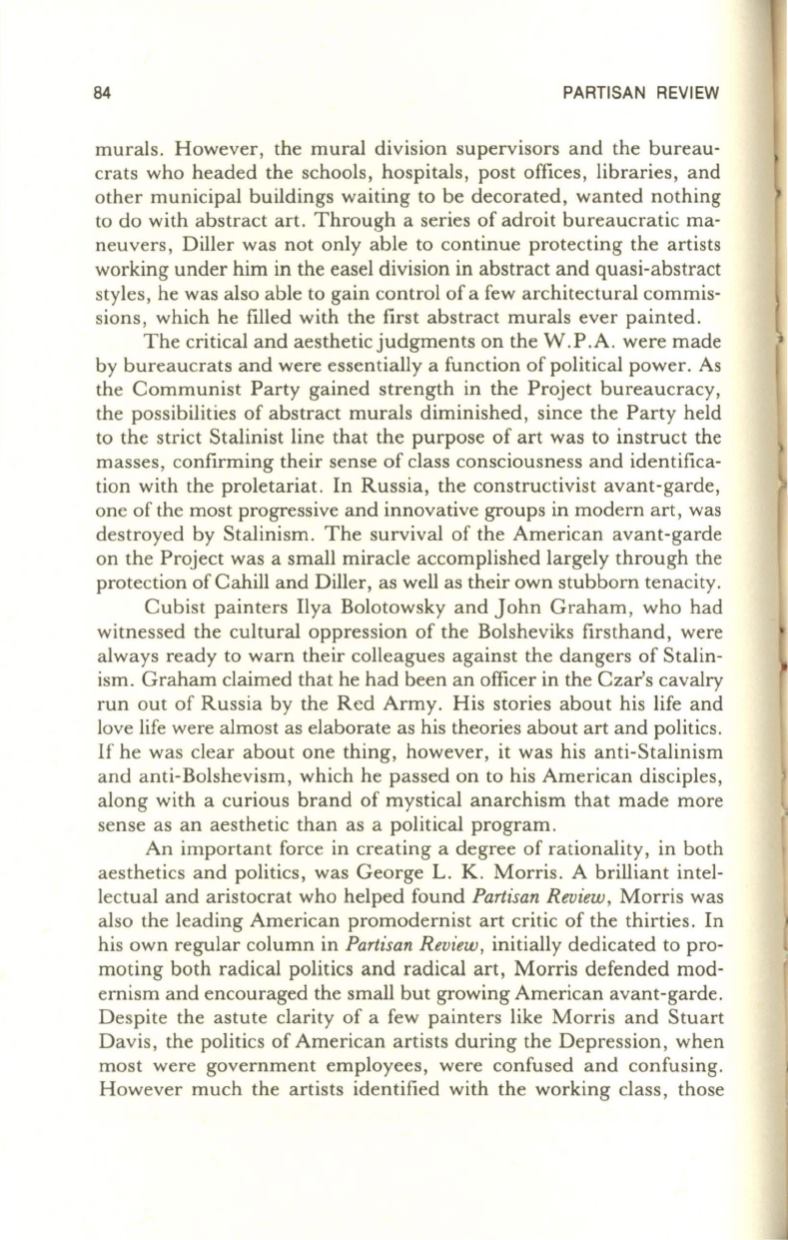
84
PARTISAN REVIEW
murals. However, the mural division supervisors and the bureau–
crats who headed the schools, hospitals, post offices, libraries, and
other municipal buildings waiting to be decorated, wanted nothing
to do with abstract art. Through a series of adroit bureaucratic ma–
neuvers, Diller was not only able to continue protecting the artists
working under him in the easel division in abstract and quasi-abstract
styles, he was also able to gain control of a few architectural commis–
sions, which he filled with the first abstract murals ever painted.
The critical and aesthetic judgments on the W.P.A. were made
by bureaucrats and were essentially a function of political power. As
the Communist Party gained strength in the Project bureaucracy,
the possibilities of abstract murals diminished, since the Party held
to the strict Stalinist line that the purpose of art was to instruct the
masses, confirming their sense of class consciousness and identifica–
tion with the proletariat. In Russia, the constructivist avant-garde,
one of the most progressive and innovative groups in modern art, was
destroyed by Stalinism. The survival of the American avant-garde
on the Project was a small miracle accomplished largely through the
protection of Cahill and Diller, as well as their own stubborn tenacity.
Cubist painters lIya Bolotowsky and John Graham , who had
witnessed the cultural oppression of the Bolsheviks firsthand, were
always ready to warn their colleagues against the dangers of Stalin–
ism. Graham claimed that he had been an officer in the Czar's cavalry
run out of Russia by the Red Army. His stories about his life and
love life were almost as elaborate as his theories about art and politics.
If
he was clear about one thing, however, it was his anti-Stalinism
and anti-Bolshevism, which he passed on to his American disciples,
along with a curious brand of mystical anarchism that made more
sense as an aesthetic than as a political program.
An important force in creating a degree of rationality, in both
aesthetics and politics, was George
L.
K. Morris. A brilliant intel–
lectual and aristocrat who helped found
Partisan Review,
Morris was
also the leading American promodernist art critic of the thirties . In
his own regular column in
Partisan Review,
initially dedicated to pro–
moting both radical politics and radical art, Morris defended mod–
ernism and encouraged the small but growing American avant-garde.
Despite the astute clarity of a few painters like Morris and Stuart
Davis, the politics of American artists during the Depression, when
most were government employees, were confused and confusing.
However much the artists identified with the working class, those


